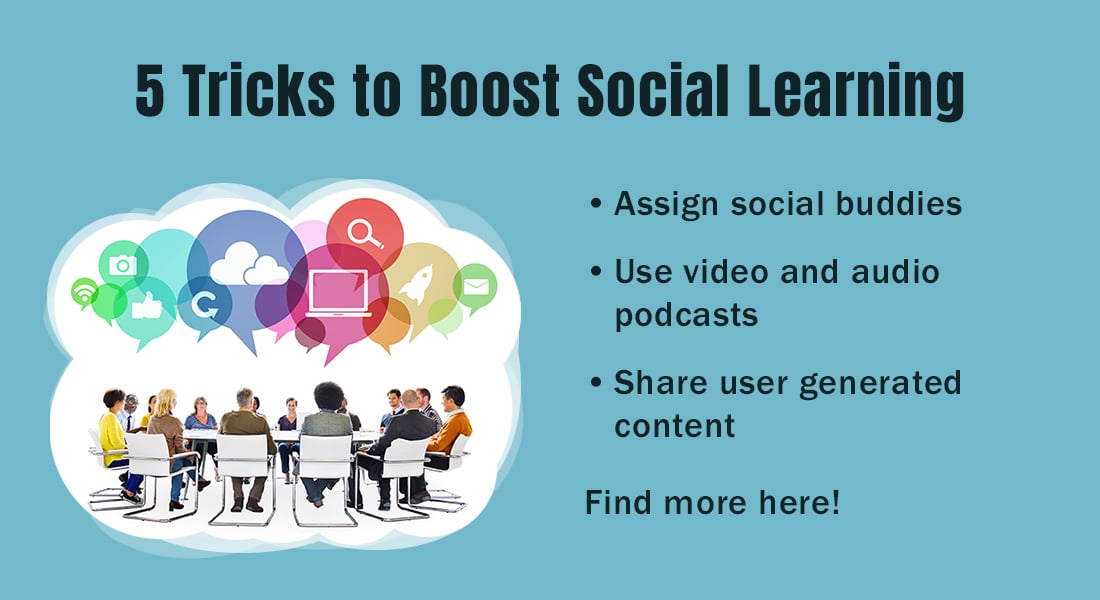5 Tips to Enhance Training Skills with Informal Learning

D o you remember your first month at the new workplace? After the initial formal training was complete, you had to get started on the job. If you recollect, you probably learned more by observing others, asking the person in the next cubicle, by trial and error, or by simply working with people who knew the job.
It is true that no amount of classroom training can actually prepare employees for their jobs. Much of workplace learning happens through informal learning. Why then, are we as training managers and L&D personnel trying to force formal learning on employees?
We cannot do away with formal training, as it is essential to impart knowledge on the organizational goals and basic job roles. In order to enhance training skills at the workplace, what we can do is implement informal learning in the following ways.
1. Self-Study
As a training manager, you cannot always wait for informal learning to happen. Self-study is an excellent way to motivate learners to follow a training program. Introduce employees to eLearning courses and make learning a part of the company’s culture. Give them a chance to take self-assessments. Make this happen through asynchronous learning programs. This also means that the learner is going to be more motivated to learn. Let employees learn at their own pace, and choose a time that is convenient and conducive to learning. Self-study is cost-effective and also improves training effectiveness.
2. Buddy Program
A new employee, especially someone who is a beginner, does not know what is ‘right’ or ‘wrong’, or what is expected of him/her at the workplace. Pair your employee with a ‘buddy’, someone who has spent considerable time in the organization, and offer new employees a smooth transition to their job roles.
A buddy program is not meant to replace a formal training program. Instead, it improves the effectiveness of an onboarding program by getting new employees acclimatized to their work environment. A buddy can introduce a new employee to co-workers, familiarize them with systems and processes, and act as a point of support and guidance.
3. Mentoring
Did you know that 3 out of every 4 Fortune 500 companies have a mentoring program in place? Mentoring helps organizations identify its employees’ talents, and also enhance training skills.
Mentors provide personal attention and guidance to mentees, and lead them on the path to career development.
Mentoring is different from a buddy program because it concentrates on both short, as well as long-term professional development goals. Most often, the mentor is at least one level higher in the organization. Employees gain from the mentor’s expertise and can focus on what is required to grow professionally. They also learn specific skills and receive knowledge that is essential for an effective job performance.
4. Expert Access
Provide employees with a list of people who are experts at their job. For example, in the sales and marketing department, you might have person A who is good at closing sales calls, or B who is good at branding guidelines. Encourage employees to turn to these experts if ever they need help with a particular task, in their job role.
This kind of informal learning is a win-win situation for both the new hire as well as the seasoned veteran in your organization, as teaching someone else is the best way to learn. Facilitating interaction with experts, certainly boosts training effectiveness.
5. Knowledge Sharing
Promote a knowledge sharing culture in your organization. To implement informal learning, get employees to share their knowledge through the intranet, or internal forums, so that others can benefit from that information. Knowledge sharing through online platforms helps remove communication barriers among employees.
According to a study by McKinsey, the average worker spends 20% of the workweek looking for internal information or tracking down colleagues who can help with specific tasks.
Xerox is an example of a company that used a knowledge sharing platform to enhance training skills of employees. Technicians who had to repair Xerox machines could look up the knowledge base to find solutions to uncommon problems.
Knowledge sharing also happens through collaborative learning. This is facilitated through the Learning Management System (LMS), as well as through social media platforms. Working with other employees in a group to complete a task or to arrive at a solution to a technical problem promotes informal learning.
Collaborative learning can connect employees in diverse geographical locations to exchange learning tips and share best practices. Corporates can enhance training skills by tapping into the learning opportunities that informal learning offers. If you have used informal learning at your workplace, do share your experiences through the Comments section.




![E-learning vs M-learning: 4 Design Aspects that Differ [Infographic]](https://blog.commlabindia.com/hubfs/Imported_Blog_Media/elearning-vs-mlearning-4-design-aspects-infographic1.jpg)
